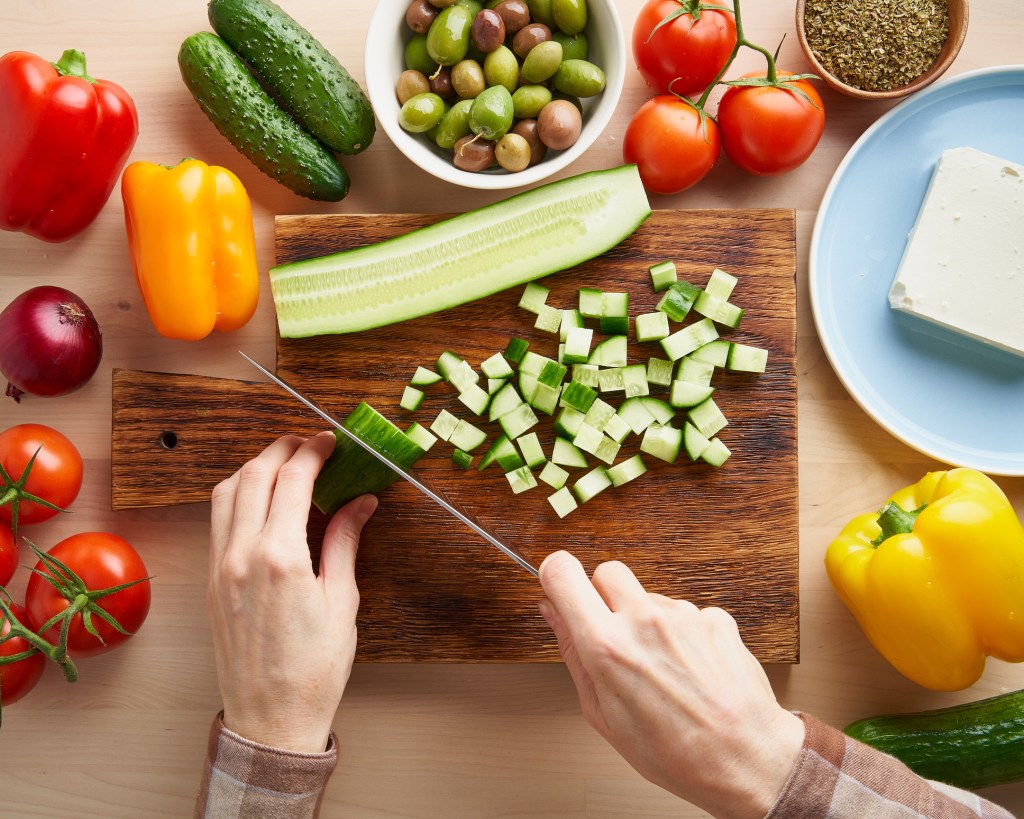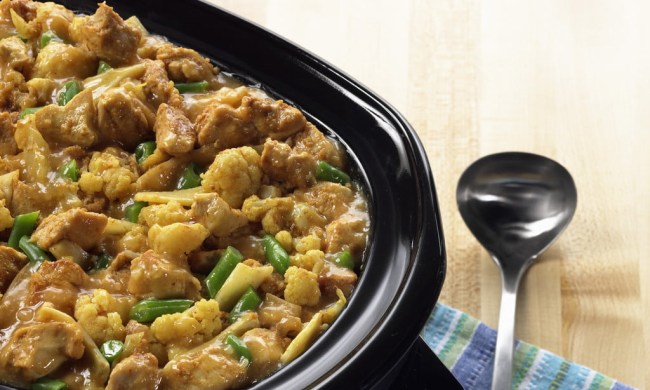When you’re looking to spruce up your lunch, wake up your ho-hum side salads, or have the most popular recipe at the next neighborhood barbecue, you may want to consider a Mediterranean pasta salad. Inspired by the Mediterranean diet and packed with fresh produce, satisfying pasta, crumbled feta cheese, and delicious homemade dressing, these nutritious, tasty salads eat more like a meal than a starter.
With briny olives, creamy crumbles of feta cheese, and the juicy goodness of vine-ripe tomatoes, these mouthwatering salads provide a refreshing new way to eat pasta on a warm summer day. Forget boring potato salad or mayo-loaded macaroni salads—Mediterranean pasta salad is the light, delicious addition that will elevate any outdoor get-together.
What goes in a Mediterranean pasta salad?
You can get creative and use the fresh produce and ingredients that you have on hand. For authentic Mediterranean flair for your pasta salad, be sure to include something salty, some crunchy veggies, and the sweet juiciness of ripe tomatoes.
Here’s a basic list of ingredients to consider for your Mediterranean pasta salad:
- Pasta: Rotini pasta is the best choice for pasta salads. It has a compact corkscrew shape that’s ideal for holding salad dressing. If you don’t have any rotini in your pantry, you can use shells, penne, elbows, bowties, or even tortellini.
- Veggies: It’s best to use vegetables that are fresh from the garden and bursting with summer flavor. Pile your salad high with crisp cucumbers, juicy red tomatoes, and thinly sliced red onions.
- Olives: Green or black, it makes no difference, because olives have a briny, salty goodness that brings out the flavor of your fresh veggies. For salads, always be sure to get pitted olives.
- Cheese: Whether mozzarella or feta, cheese adds a creamy texture to your salad without mayo or creamy dressing.
- Fresh herbs: Adding parsley, basil, cilantro, and other fresh herbs helps to wake up the flavor of all of the other ingredients.
- Arugula: The slightly peppery taste of arugula adds flavor dimension to any salad.
- Salami: Cubed salami really adds an extra something to salads. If you’re taking your salad to a party or barbecue, you may want to put the salami cubes in a separate container for people to add—or not—based on their dietary preferences.
Pasta salads can be made in advance, which is a bonus on super hot days, since you can boil the pasta in the cooler mornings or the night before. For best results, cook your pasta until just al dente, particularly if it will be sitting in the fridge for a while after you put on the dressing. After you drain your pasta, run it under cold water to cool it down quickly (particularly if you will be serving it soon).
In the meantime, whisk your salad dressing in the same bowl you plan to toss and serve your pasta salad. Your dressing can be a bottled vinaigrette, but making a fresh dressing gives your salad so much more flavor. We love this lemon-dijon dressing because it’s so tasty and yet so easy to make—just whisk the ingredients together and then add the salad and pasta and toss.
Here’s what you’ll need:
- ¼ cup extra virgin olive oil, plus extra for drizzling
- 3 tablespoons lemon juice
- 1 teaspoon Dijon mustard
- 3 garlic cloves, minced
- 1 teaspoon herbes de Provence or dried Italian seasoning
- ¼ teaspoon red pepper flakes
- ¾ teaspoon sea salt
Mediterranean pasta salad FAQs
What is Mediterranean pasta made of?
Classic Mediterranean pasta is made from unleavened dough of a durum or semolina wheat flour mixed with water or egg. You can also find whole-grain and chickpea pastas as part of a typical Mediterranean diet.
How long can you store Mediterranean salad after it’s made?
In an airtight container, pasta salad should stay fresh for four to five days. Keep a separate container of dressing in the fridge to add to the salad in case it dries out in the fridge.
Are Mediterranean pasta salads better than mayo-based pasta salads?
Having mayo-based salads at a hot summer party can be risky at best. Bowls of potato salad, pasta salad, and coleslaw sitting in the sun for an hour or two could lead to bacteria growth and some very unhappy barbecue guests. On top of food safety concerns, mayo-based salads are higher in fat and calories than the Mediterranean-style pasta salads.
What is a Mediterranean chopped salad?
Mediterranean salads are colorful salads featuring chopped veggies such as romaine lettuce, peppers, tomatoes, cucumbers, red onions, chickpeas, and Kalamata olives, along with some crumbled feta cheese. For a low-carb option, skip the pasta and just top the salad with a classic red wine vinaigrette, then enjoy!
With summer here, we’ll definitely be eating more salads. Adding a few Mediterranean pasta salads to your summer menu will have the whole family eating their veggies and asking for seconds!





